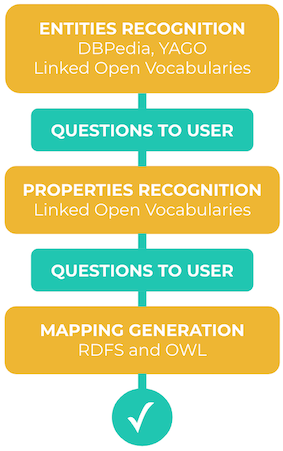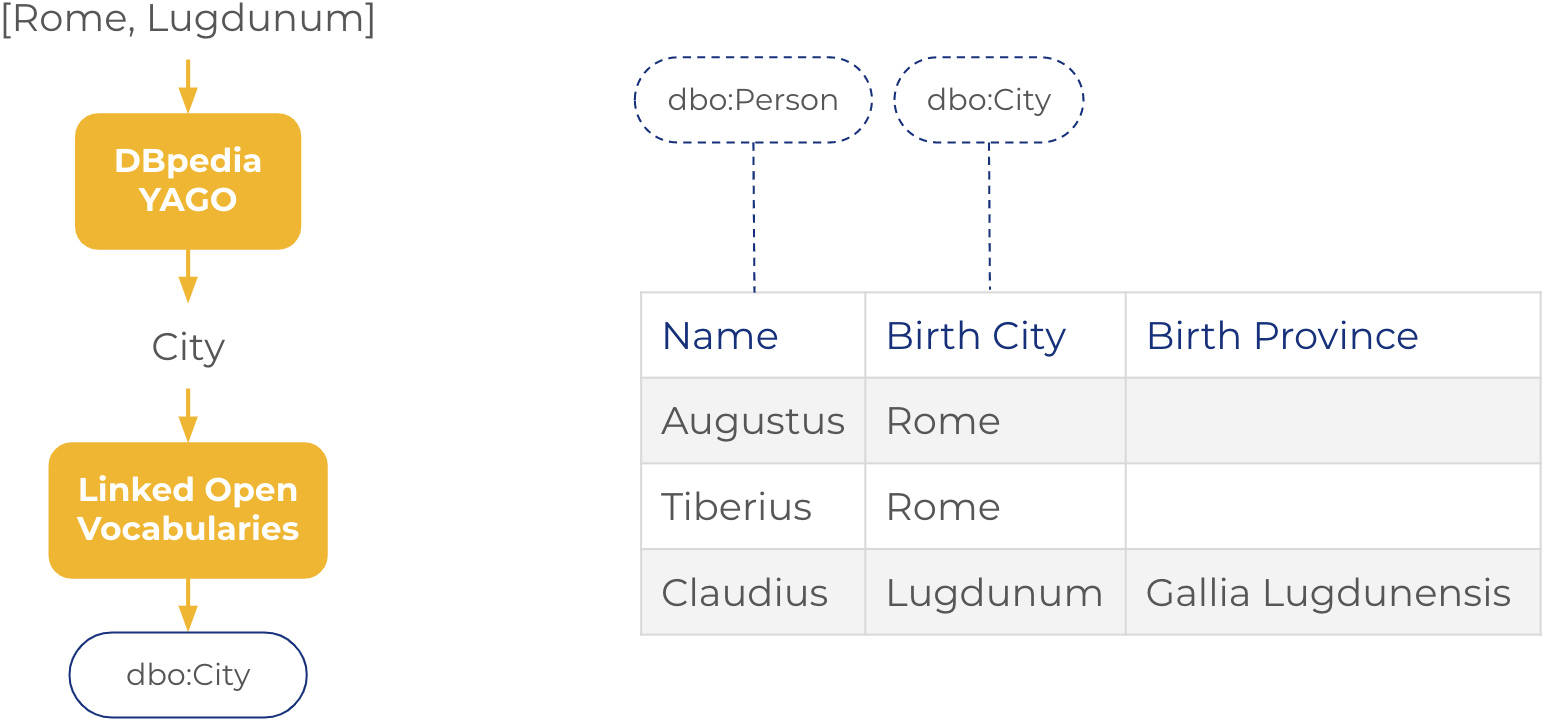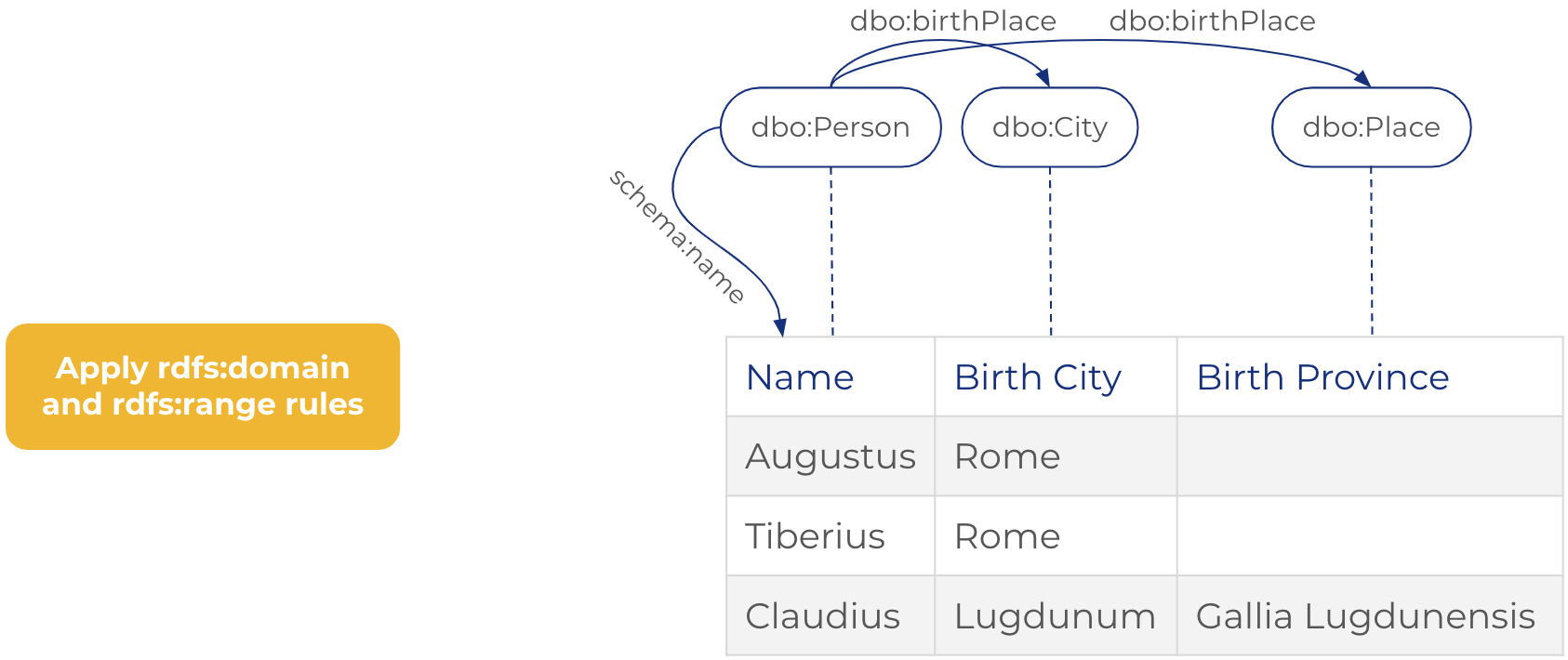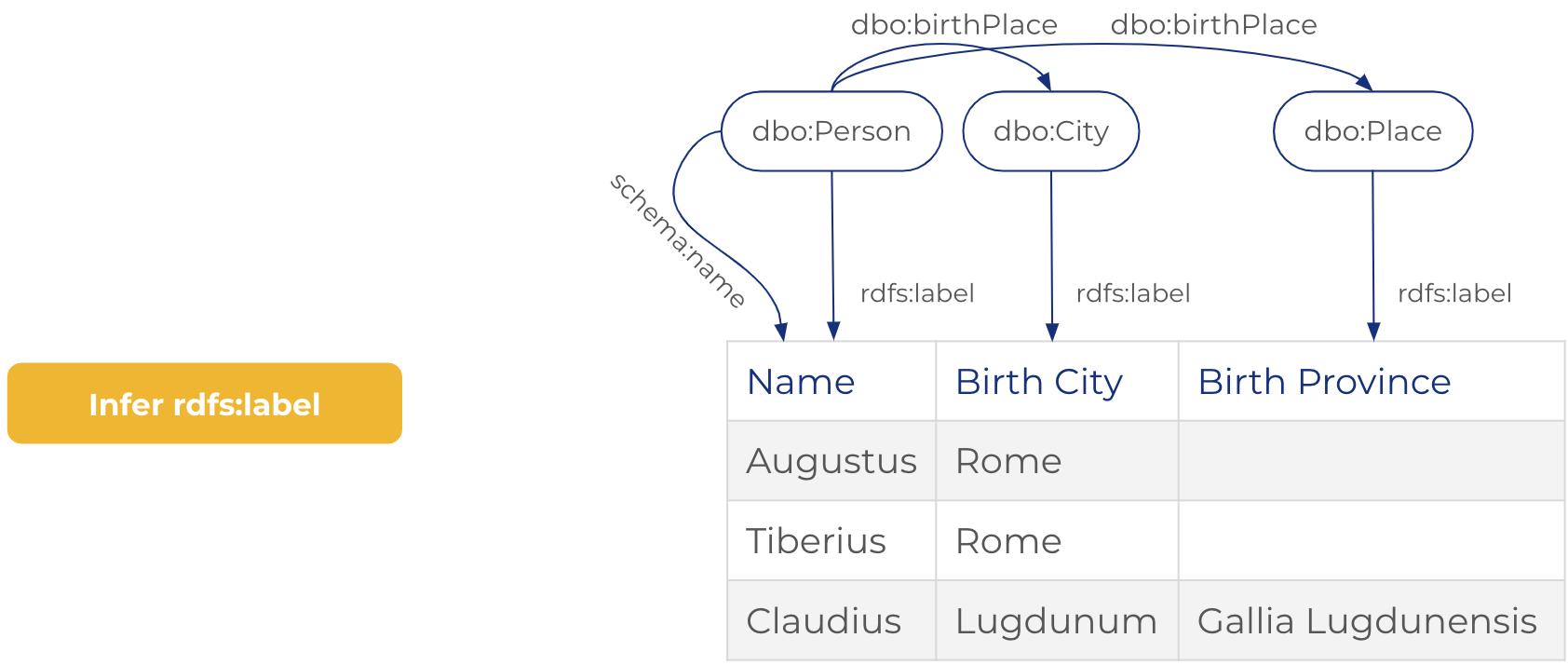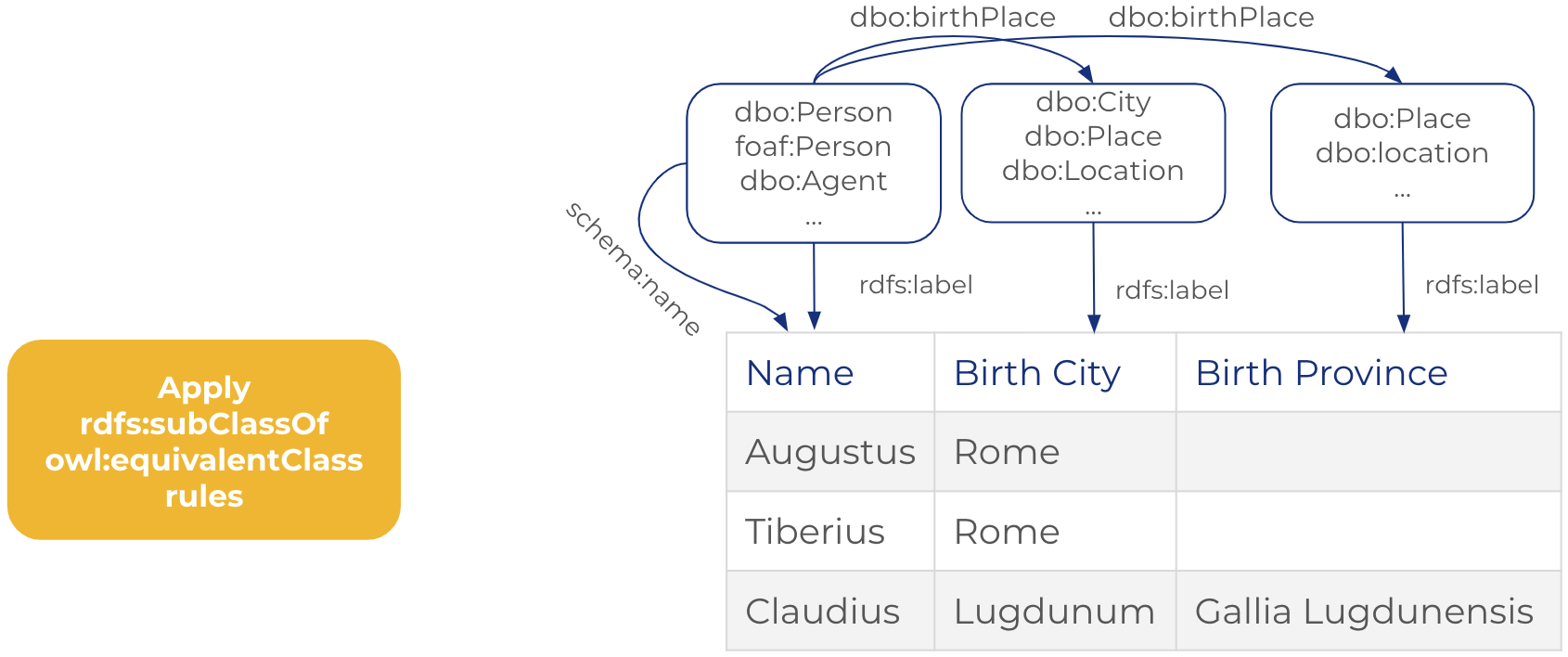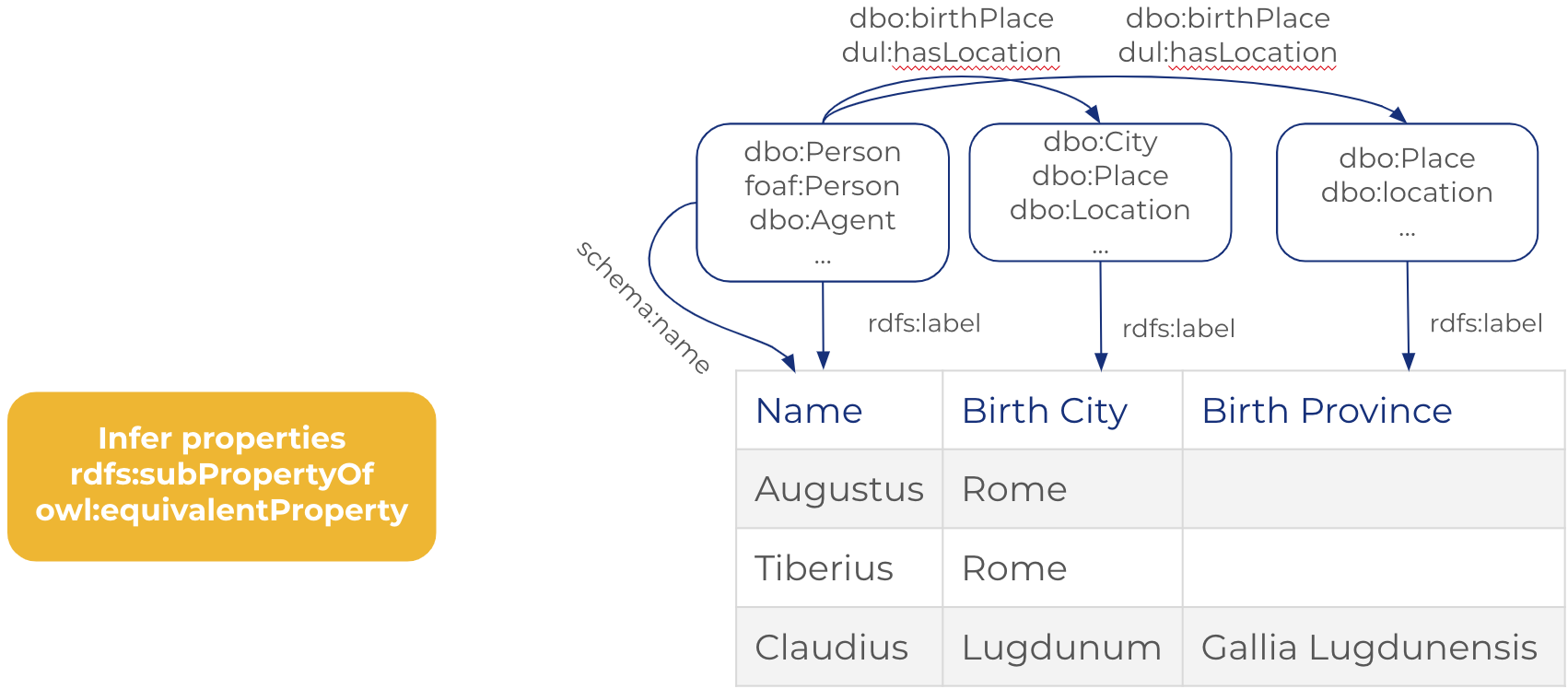SemanticBot is a semi-interactive ontology mapping tool. It provides an easy-to-use interface in order to semantize (i.e. to map ontologies on) OpenDataSoft datasets.

For more details, you can read the following demonstration paper:
DBpedia is a knowledge graph containing informations extracted from wikipedia . SemanticBot uses DBpedia to perform named entity recognition. In other word, to find class of entities (e.g., Italia is a country/PopulatedPLace.. or B.Obama is a President/Person..)
YAGO is an other knowledge graph that is used for named entity recognition by the SemanticBot.
LOV is an ontology search engine. It is used by the SemanticBot to find candidate ontologies for opendatasoft datasets.
An ontology is a vocabulary defining the concepts and relationships used to describe an area of concern.
It's composed of:
classes(e.g. Car, Building, Person, Disease, Source Code) to represent a concept.properties(e.g. horsepower, financed By, date of birth, has Symptoms, Author) to represent relation between concepts.rules(e.g. A person have a unique date of birth). Ontologies can be created for every area of concern and by everyone using RDF (Resource Description Framework), RDFS (RDF Schema) and OWL (Web Ontology Language).
HDT (Header, Dictionary, Triples) is a compact data structure and binary serialization format for RDF
RML is a generic mapping language to describe multi-format to RDF transformations. YARRRML is a simple syntax to respresent RML rules.
Assuming you already have python 3.6, pip, `yarn and gcc/clang with c++11 support,
Clone the repository and go to the root folder: semantic-bot.
It is strongly recommended to create a new virtualenv.
Run the installation script
./install.shThen, in file chatbot_app/local_settings.py update the secret key.
SECRET_KEY = "<SECRET_KEY>"If you get errors, proceed to the manual installation.
install python dependencies with pip
pip install pybind11==2.2.4
pip install -r requirements.txtDownload hdt versions of DBPedia and YAGO datasets at this address:
https://eu.ftp.opendatasoft.com/bmoreau/data_dumps.zip
and override /data_dumps
create a file chatbot_app/local_settings.py and add a secret key.
SECRET_KEY = "<SECRET_KEY>"finally, install js dependencies
yarnResulting mapping can be serialized using RML turtle syntax or YARRRML (default) syntax. To choose between the two serializer, add:
MAPPING_SERIALIZER = 'RML'or
MAPPING_SERIALIZER = 'YARRRML'in your chatbot_app/local_settings.py file.
Navigate to semantic-bot folder and execute the two commands:
yarn run build
python manage.py runserverApp should be running on http://127.0.0.1:8000/
SemanticBot is powered by an API exposed by this service:
Correspondences are the semantic correspondences between a dataset's field and an ontology. Fields can be linked to classes (Car, Person, ...) or poroperties of class (Engine horsepower, full name, ...).
GET /api/{dataset-id}/correspondances/classes to retrieve field values/class correspondences (powered by DBpedia, Yago and LOV).
GET /api/{dataset-id}/correspondances/properties to retrieve field name/properties correspondences (powered by LOV).
GET /api/{dataset-id}/correspondances/ to retrieve both correspondences.
POST /api/{dataset-id}/correspondances/mapping to translate a set of correspondences into valid RML mapping file.
POST /api/{dataset-id}/correspondances/confirmed push confirmed correspondences after semantization.
POST /api/{dataset-id}/correspondances/awaiting push confirmed correspondences after semantization.
POST /api/{dataset-id}/correspondances/denied push denied correspondences after semantization.
Conversations API is used to translate possible correspondences into Human Readable questions.
POST /api/conversation/question/class to retrieve a question about a class/field correspondence.
POST /api/conversation/question/property to retrieve a question about a property/field correspondence.
POST /api/conversation/question/property-class to retrieve a question about a class/property correspondence.
GET /api/conversation/error/lov-unavailable to retrieve phrase when LOV is unavailable.
GET /api/conversation/error/no-classes to retrieve phrase when no class is found.
GET /api/conversation/greeting to retrieve welcome phrase.
GET /api/conversation/instructions to retrieve instructions to use the SemanticBot.
GET /api/conversation/answer/positive to retrieve response to positive user input.
GET /api/conversation/answer/neutral to retrieve response to neutral user input.
GET /api/conversation/answer/negative to retrieve response to negative user input.
GET /api/conversation/salutation to retrieve phrase to say goodbye to the user.
GET /api/ner?q=[query]&lang=[language] returns the class of the term in the query.
Our approach works with 3 automatic steps:
- Entities Recognition
- Properties Recognition
- Mapping Generation
Between each step, semantic bot asks simple questions to the user in order to validate the semantization.
The goal of this step is to identify which class correspond to each field of the dataset.
N-first values of each fields are searched in DBPedia and Yago. Classes of relevant resources are returned. For each field, class that occur the most will be search in LOV and proposed to the user. Class questions are made using rdfs:label of classes.
the following figure illustrate the entities recognition step.
The goal of this step is to identify which property correspond to each field of the dataset.
field name and datatype of each field are searched in LOV property api. Property questions are made using rdfs:label and of properties.
the following figure illustrate the Properties recognition step.
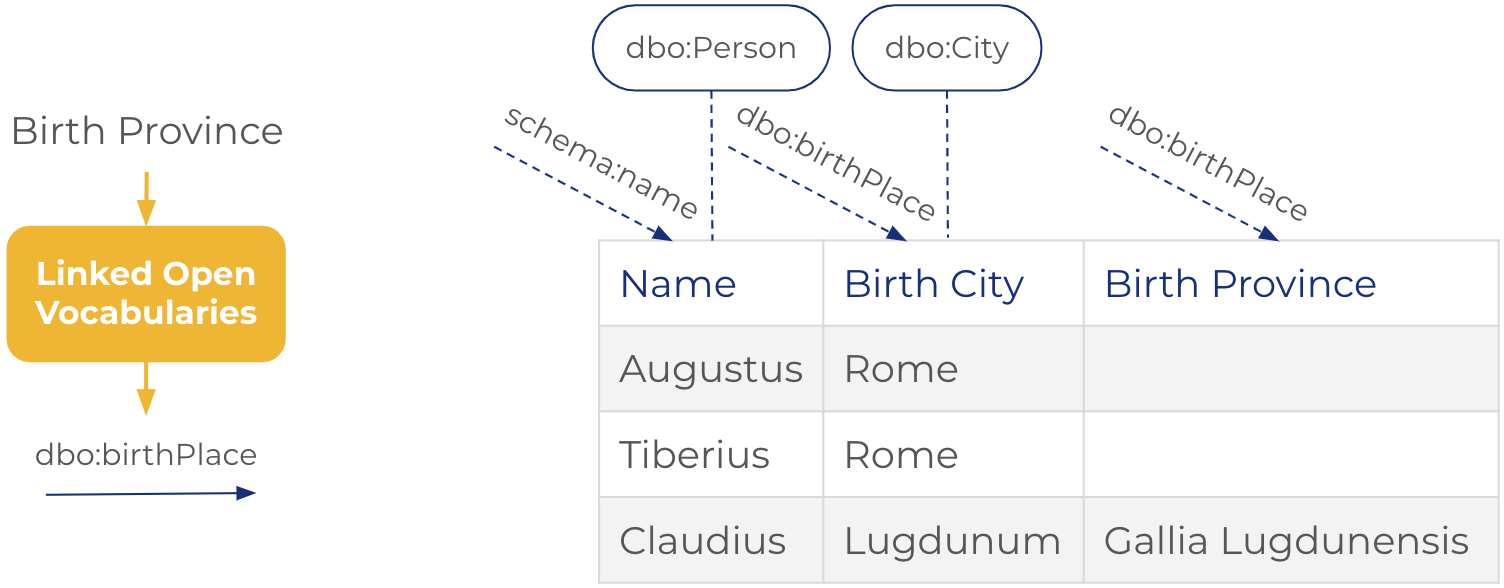
Before serializing the RDF mapping, a lot of mapping rules can be inferred.
First, using rdfs:domain and rdfs:range of properties, we can infer new classes that correspond to dataset fields.
In the following example, class dbo:place is inferred as a corresponding class of field
Birth Province because the rdfs:range of the property dbo:birthPlace is dbo:place.
Then, we add rdfs:label property for each type of resources in the RDF mapping. This is important to have a human-readable RDF dataset. Value of the rdfs:label is the field that was used to identify the class of the resource.
The following example show how rdfs:label properties are infered.
Finally, we add new class and properties by saturating the RDF mapping using using subClassOf, equivalentClass, subPropertyOf, equivalentProperty rules.
The following example shows inferred classes using rdfs:subClassOf, owl:equivalentClass
The following example shows inferred properties using rdfs:subPropertyOf, owl:equivalentProperty
At the end, mapping is serialized and sent to the user.
logs folder contains data about the usage of the SemanticBot:
- Number of semantized dataset
- Number of cancelled semantization
- Number of failed semantization
- Average time to semantize a dataset
- Field/URI (class or property) associations
Analyse logs with:
python logs/log_analyser.py logs/chatbot_results.logChatbot icon designed by Oksana Latysheva, is licensed under CC BY 3.0.
